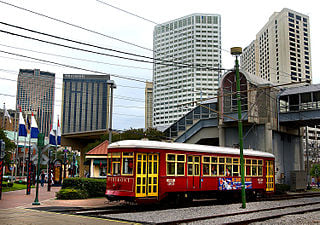San Francisco has its beloved cable car. New Orleans its fabled streetcar. And, what has Fresno? FAX, for Fresno Area Express, is what.
In the big raisin (among locals, the word-pair an innocuous, cheery substitute for the city’s name), big changes are a comin’. Not only are new high-speed railroad structures and tracks being built in addition to a major realignment of a section of California State Route 99 (principally between Ashlan and Clinton avenues) being done to accommodate the section of high-speed railroad track that will traverse that area, but by Nov. 2017, it is expected that 15.7 miles of bus rapid transit right-of-way will be fully in service. So, by that time next year, the transportation scene in Fresburgh (another one of those local, “in lieu of” expressions) will have a markedly different look.
If I had to hazard a guess, I would say that about 100 city transit buses are roaming the streets on any given weekday. That’s 100 daily bus runs on which 14 million annual rides are made. Fourteen million yearly works out to an average 38,356 daily FAX rides made.
Could Fresno do better?
If the qualifying criterion is air-quality improvement, then the answer is: Fresno could stand to do better – I mean what city couldn’t? The number of rides, whatever the amount, if not taken on buses and instead are made in cars, this would mean poorer area air quality, absolutely. Disclosure: Keep in mind that bus transfers are made and, each time one is, that might well count as an additional ride thus adding to the overall total.
At any rate, could the public transit patronage figures be better?
No doubt.
As it relates, to limit local transit service to buses exclusively, one has to wonder if area citizens are getting the biggest bang for their hard-earned bucks.
Moreover, I think lacking in the Fresno transit equation is a broader pedestrian element. I say this keeping in mind who uses public transit. Pedestrians, by and large. So it seems logical in the sense that in creating strong pedestrian-friendly environments, this is going to prompt transit usage so long as said transit connects pedestrian center to pedestrian center. The more pronounced walking activity in said centers is, the higher the likelihood that center-to-center-linked transit serving such will experience higher patronage activity also.
Where rail can answer the call
In planner Jeff Speck’s thoughtful treatise Walkable City: How Downtown Can Save America, One Step at a Time, the author relates: streetcar systems, if standalones (i.e., those not tied to an existing robust transit network), are new-urban-district-development facilitators.1 Translated, this means that electric street railways have a tendency to promote development around stations.
Coupled with this is a concept called permanence. Whereas with passenger rail-based transit systems and whereas such are perceived to possess an element of permanence, this is missing from transit-bus-based networks. That gives rail-centered transit an edge; that is, the potential for station-area-related attendant development to crop up around passenger stations is typically greater with trains than compared to that for bus.
The Fresno case study
Add to that the presumption that with the Fresno downtown Fulton Mall conversion to become the Fulton Corridor (with retail/restaurant/office space replete with sidewalks, trees, art- and sculpture-work and statuary, a two-way street with on-street parking), when completed, the hope is this district will be a thriving center.
This, in conjunction with the nearby planned construction of Fresno’s downtown high-speed rail station complex, is expected to further encourage development and redevelopment all throughout the downtown core.
The missing link
The essential element of the above is that there are new ideas being tried, both with the mission of breeding new life into the city’s central business district.
While those are in process, perhaps another approach – a historic streetcar – could be added to the mix and, by doing so, that could quite possibly be the missing link to facilitate and encourage even greater downtown development/redevelopment activity.
To bring you more up to speed, Fresno has many historic districts that could be connected quite nicely and serve residents, workers as well as prospective tourists, especially once the high-speed rail complex is open for business. Many a community has adopted this model with realized successes. Travelers arriving by high-speed train as soon as 2022, moreover, will need to have their mobility needs met, not unlike people living and working here already. As it relates, I believe it would be so short-sighted for those coming here from afar to have to step off a world-class high-speed train only to have their options for getting around town limited to only foot, car and bus. All of which, incidentally, require pavement to permit such.
The Tower District, the Cultural Arts District, the Fulton Corridor, the Santa Fe Depot (Amtrak Station) the Convention Center, Fresno City College and other historical venues, could all be tapped. Visitors could be provided guided tours of Fresno’s historic sites and what better way to do that then on a trolley (not trolley bus, thank you) line with period streetcars to match? A historic trolley much like those in San Francisco, New Orleans, Little Rock, Kenosha, Newark (New Jersey), Seattle and others, could work wonders and be just the vehicle to (excuse the pun), get things rolling.
If it works in those places, there is every reason to believe it could work here too. Who knows, infill development big-time could be propelled in the process.
While some communities never dismantled their networks, in others there are re-introductions. Will Fresno join the list? Those who say “variety is the spice of life” can’t all be wrong. That’s what I say!
Notes
- Jeff Speck, Walkable City: How Downtown Can Save America, One Step at a Time, 2012, p. 154
Lower image above: Robert Kaufmann, FEMA Photo Library collection
This post was last revised on Apr. 30, 2020 @ 12:42 p.m. Pacific Daylight Time.
– Alan Kandel

![320px-FEMA_-_20722_-_Photograph_by_Robert_Kaufmann_taken_on_12-21-2005_in_Louisiana[1]](https://alankandel.scienceblog.com/files/2016/06/320px-FEMA_-_20722_-_Photograph_by_Robert_Kaufmann_taken_on_12-21-2005_in_Louisiana1.jpg)